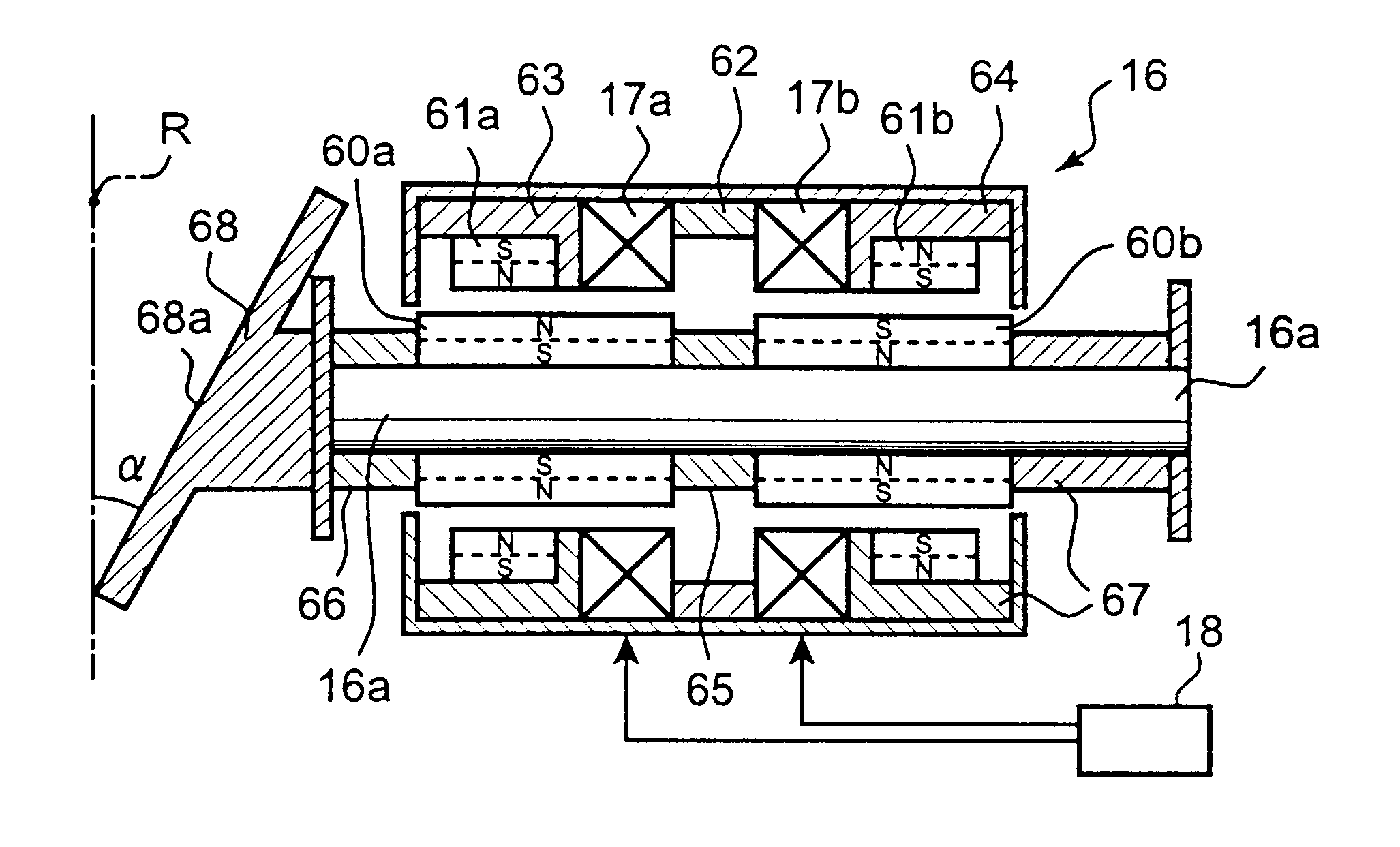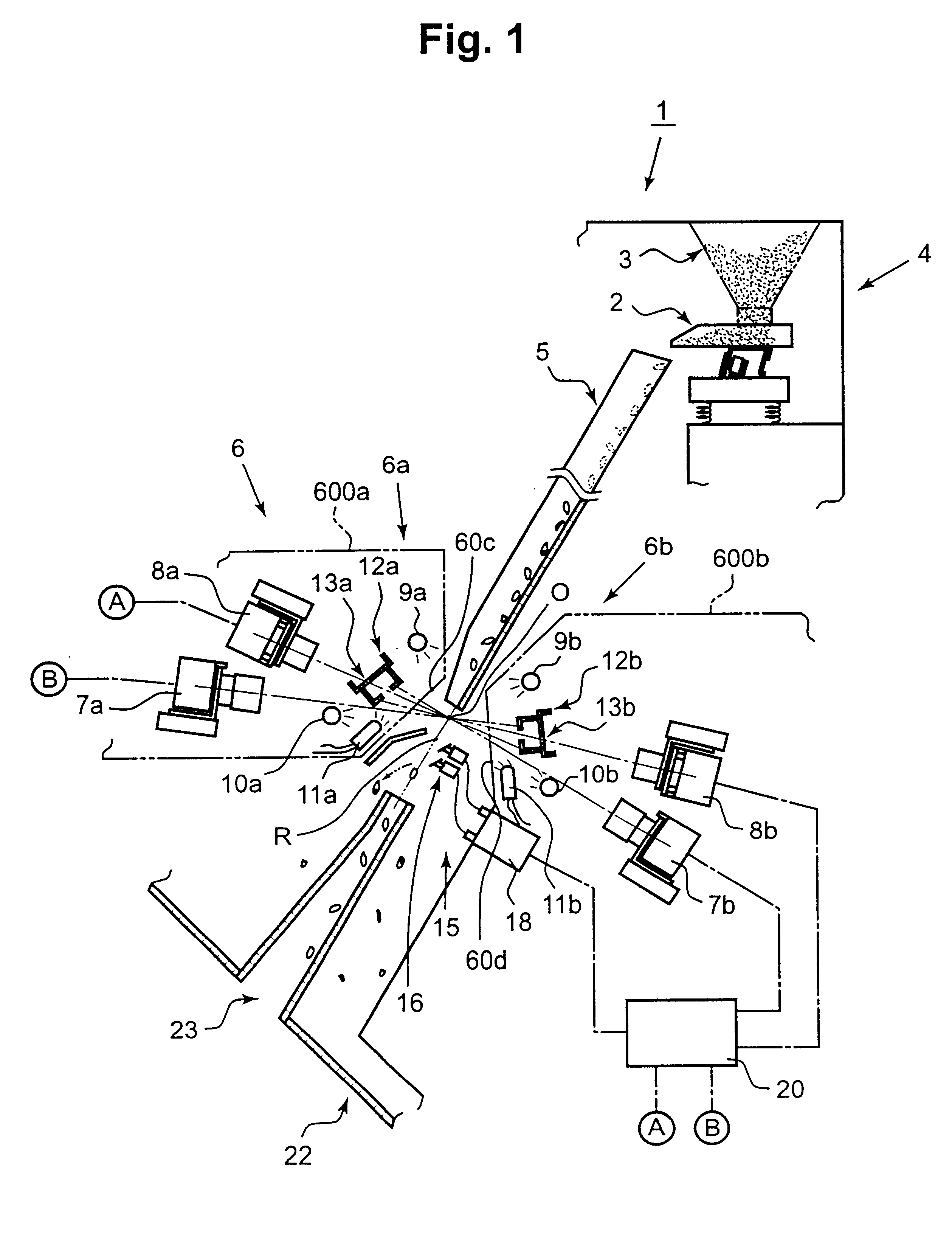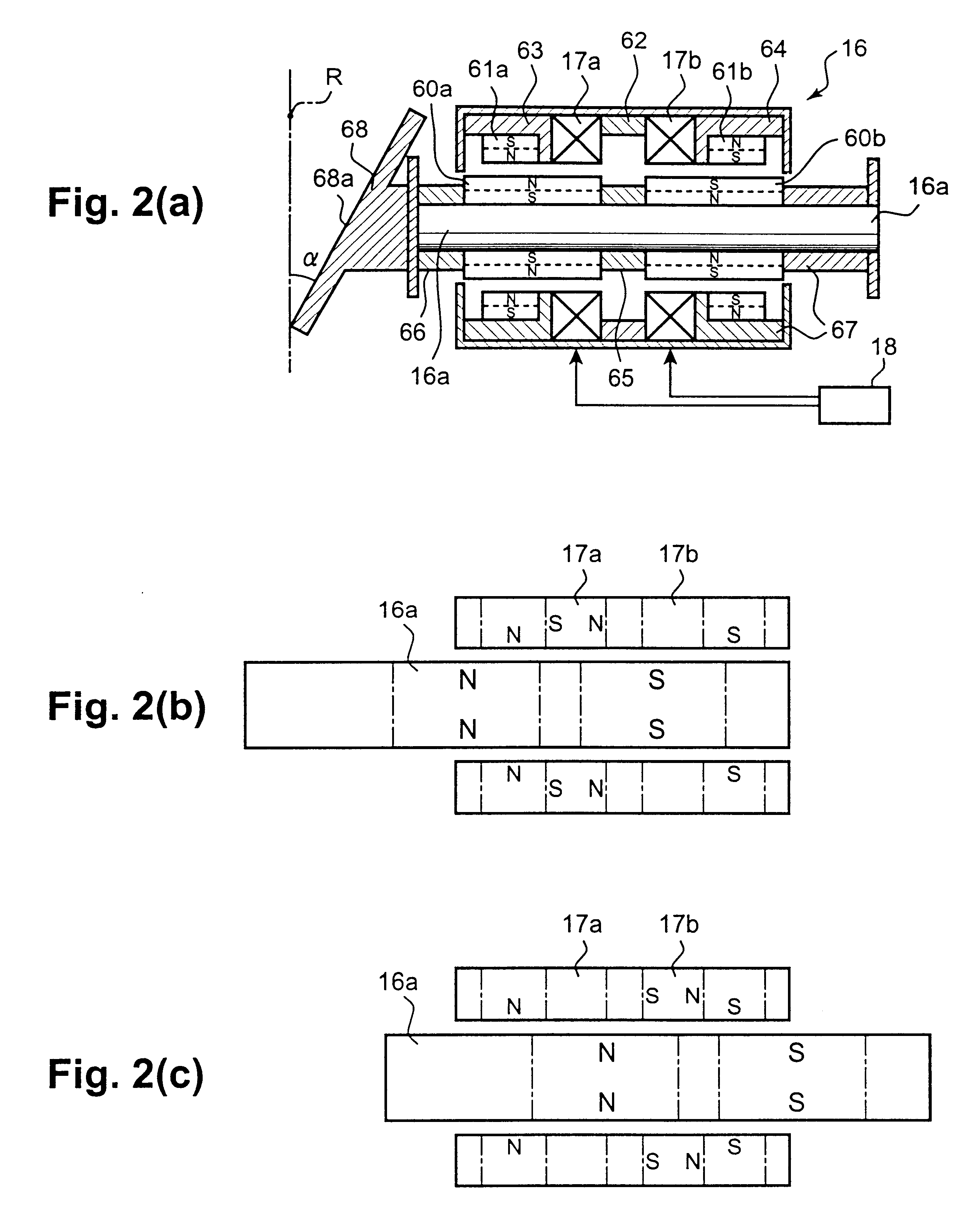Granular object sorting apparatus
a sorting apparatus and granular object technology, applied in sorting, chemistry apparatus and processes, membrane technology, etc., can solve the problems of granular objects, inevitable limit in sorting performance, and limit in response performance of the retracting and projecting-out operation of the reciprocating rod
- Summary
- Abstract
- Description
- Claims
- Application Information
AI Technical Summary
Benefits of technology
Problems solved by technology
Method used
Image
Examples
Embodiment Construction
The outline of the granular object sorting apparatus according to the present invention is explained with reference to FIGS. 1 and 2. The sorting apparatus explained herein is one in which, for grains among granular objects, especially rice grains as raw materials to be sorted, the sorting or ejection is made for rice grains having colored portions or foreign objects mixed in the rice grains. FIG. 1 is a sectional view diagrammatically showing main elements and their internal structural arrangement of the granular object sorting apparatus 1. The apparatus is equipped, at its upper portion thereof, with a rice grain supplying section 4 which is formed by a vibration feeder means 2 and a tank section 3, and a chute 5 which is in an inclined plate-like form and transfers to a predetermined falling locus the rice grains supplied from the vibration feeder means 2. The rice grains thus transferred by this chute 5 are then released to an optical detecting section 6 to follow.
The optical de...
PUM
| Property | Measurement | Unit |
|---|---|---|
| length L1 | aaaaa | aaaaa |
| length L1 | aaaaa | aaaaa |
| transverse length L2 | aaaaa | aaaaa |
Abstract
Description
Claims
Application Information
 Login to View More
Login to View More - R&D
- Intellectual Property
- Life Sciences
- Materials
- Tech Scout
- Unparalleled Data Quality
- Higher Quality Content
- 60% Fewer Hallucinations
Browse by: Latest US Patents, China's latest patents, Technical Efficacy Thesaurus, Application Domain, Technology Topic, Popular Technical Reports.
© 2025 PatSnap. All rights reserved.Legal|Privacy policy|Modern Slavery Act Transparency Statement|Sitemap|About US| Contact US: help@patsnap.com



